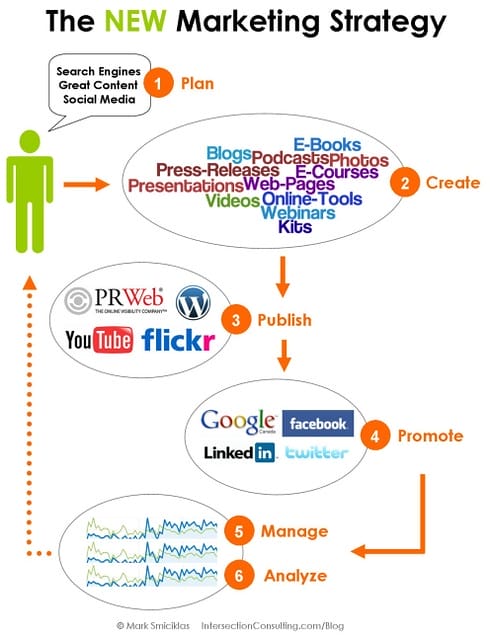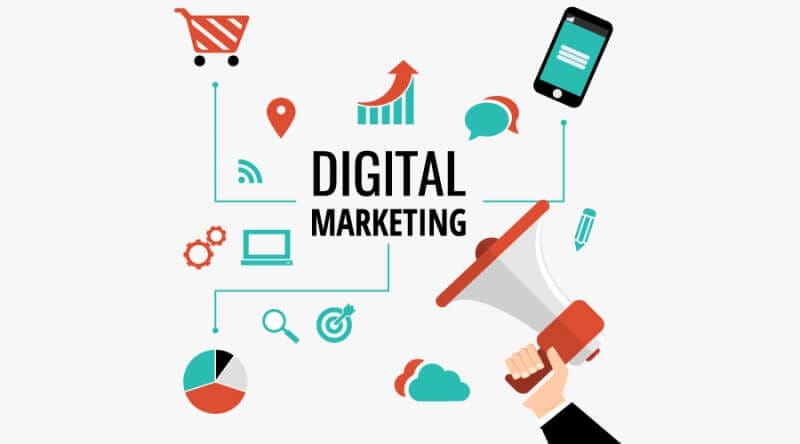
Presentations are an unavoidable part of your job as a social media professional, and a vital part of your career growth. If this will send you nervous butterflies, don’t worry! It takes time, persistence and practice to honor your presentation skills.
Author
Presentations can be a challenge but they are an opportunity as well. If you present a new social strategy, prove a campaign’s ROI or sell a company to a new customer, the fundamentals of good presentation are the same. Follow those tips (and use this template) to create a compelling presentation on social media that keeps your audience engaged from beginning to end.
Do your research
Analysis is the first and most important part of any given presentation. It is the backbone to the story you’re going to tell. Instead of going to Google and blindly scouring the internet, use those questions to direct your analysis:
What’s your focus and objective?
Usually you don’t just give a presentation about kicks and giggles on social media. Maybe you’re trying to get an executive buy-in for a new social device, or you want your social team to pitch a new strategy on it. Whatever your emphasis may be, your presentation should be deliberate, mission-driven and working towards a solution.
Some of that work may come from digging into your preceding social efforts. Include clear examples of social posts that have worked on achieving future goals and initiatives in the past. Uncover gaps in content and opportunities for development when listening to your audience. Hone in on your KPIs and find social evidence indicators and ways of assigning importance to your observations.
It’s necessary to bring in proof points and data to support your argument, but don’t lose focus. Use your research to narrow down your presentation on two or three key takeaways.
Who is your audience?
Analysis for your presentation should not be limited to your subject matter. You will also need to do a bit of research about your audience. Who you are talking to should be asking why and how you are talking to them.
If you are working in-house and promoting a single brand, chances are you will show your research and history on your subject internally to colleagues and leaders who know you. But social media marketers working in an organization have different challenges which probably require a little more research.
Before you pitch a social media strategy to a new client, it is important to have a deep understanding of their brand, industry and business needs. Within their brand history, you will need to narrow down the pain-points of the customer, who are their rivals, their current social strategy, and more.
Create your deck
Just like we’re linked to a wider world through social media, so are stories. Great storytelling in your presentation will help keep your audience enthralled from beginning to end.
The “panel” you’re going to present serves as the outline of your story arc, and your slides as examples. Use this free, personalized presentation template for the social media to create a polished slide deck.
Introduce yourself and your agenda
For speakers there is a popular piece of advice that goes, “Tell them what you are going to tell them. Ask them what. Then remind them what you’ve told them. “Using this structure will help set the audience expectations and make sure you get started and ended with effects.
Attach a slide at the beginning of your presentation which introduces you and any presenting partners. Include a slide of the agenda after that which provides a high-level summary of your presentation.
Consider sharing the agenda in advance too. It provides stakeholders with an opportunity to respond with preliminary notes that might help you tweak your presentation to match it with their expectations. This also gives the audience flexibility for ahead of time to answer questions.
Start with a hook
Engaging the audience in your presentation early on will help keep your attention throughout. You’re going to lure people in with a strong message, and attract them from the get-go. Shocking figures, rhetorical questions, a fascinating anecdote and inspirational quotes are some of the most common examples.
Make slides succinct
Each slide you’re presenting should be easy, centered and without unnecessary distractions. “The golden rule is to have one argument or idea per slide,” says Paul Jurczynski, a TED Talk coach and cofounder of Improve Presentation. Take it on the next slide if you have more to say.
Use colors with a purpose in mind
In many instances, the color schemes used in your agency or company style manual should be integrated into your presentation. Let’s assume, for example, that you send a social media presentation on behalf of an organization to a new customer or company. You may not be recognizable to the audience as an entity but they have an existing relationship with your brand. Colors and fonts are an easy way to set off those triggers of brand awareness and to remind your audience that you are an expert on the subject.
If you are going to branch out, it takes reason for your colors. Remember the related feelings with colours. People associate yellow with warmth and energy, for instance, while red is also associated with enthusiasm and passion. Whatever color scheme you pick, it should be consistent over the course of your presentation.
Incorporate data visualization
Presentations on social media campaigns mostly come down to showing ROI for stakeholders. Visualization of data such as graphs and charts is an important way to make your case.
In the TED talk given by data journalist David McCandless, he explains that the benefit of data visualization is that “that we can see the trends and connections that matter and design the information so it makes more sense, tells a story, or helps us to concentrate only on the important information.”
Don’t get bogged down in mapping every single point of data you find during your investigation. The best graphics are basic graphs with easy to spot takeaways. Try to highlight key numbers or data points by using colour, bolding or other visual treatment that makes them pop.
Show your work
It’s a talk about social media marketing, and of course you can share examples of your social media work. Pull in positive social media screenshots to demonstrate how your tactics performed with the brand(s) you represent.
Wrap it up with a call-to-action
A powerful CTA always binds back to your original goal and encourages your audience to take action once your presentation has finished. Essentially, it’s your way of serving up a final take away and leaving the ball in the court of your crowd.
Author
-

Support staff at Galaxy Marketing for everything social related
How to Embed a Video in PowerPoint
September 9, 2023
Meta Description: Want your PowerPoint Presentation to stand apart? Read on to understand why you should embed YouTube videos to your presentations and how you can do so.
0 Comments8 Minutes
5 Tips to Use Social Media Effectively to Increase Traffic on Affiliate Websites
September 3, 2023
Learn how to use social media with these five tips to grow the popularity of your affiliate website and market like never before.
0 Comments8 Minutes
How to Perfect Social Listening Skills for Increased Product Sales
June 19, 2023
According to Brandwatch, 96% of the people discussing brands online don’t follow their profiles, so marketers are likely to miss out on relevant posts. If brands are to create a strong online presence, let alone increase product sales, they need to engage followers more proactively.
0 Comments17 Minutes
Has Crypto Bottomed? Learn What Analysts Say Now!
StickyCrypto
February 22, 2023
Cryptocurrency is a digital asset used as a medium of exchange. Factors influencing its price include supply & demand, news events, speculation, technical & fundamental analysis. Is crypto at its bottom? Analyze charts & underlying economic factors to make informed decisions on whether now is a good time to invest.
0 Comments9 Minutes
Is Crypto the Future? Unlock the Possibilities of Tomorrow Today!
StickyCrypto
February 22, 2023
Cryptocurrency is a digital currency that offers high security, low fees and fast transactions. NAN is a type of cryptocurrency with advantages such as no fees, instant transaction speed and smart contracts support. Discover why crypto may be the future of finance!
0 Comments8 Minutes
What is Bayc NFT? Unlock the Possibilities of Non-Fungible Tokens!
StickyNFT
February 22, 2023
Experience secure & efficient trading of digital assets with Bayc NFT! Enjoy access to liquid markets, a wide range of digital assets, low fees & more. Get in touch with us for social media marketing services today!
0 Comments10 Minutes




















